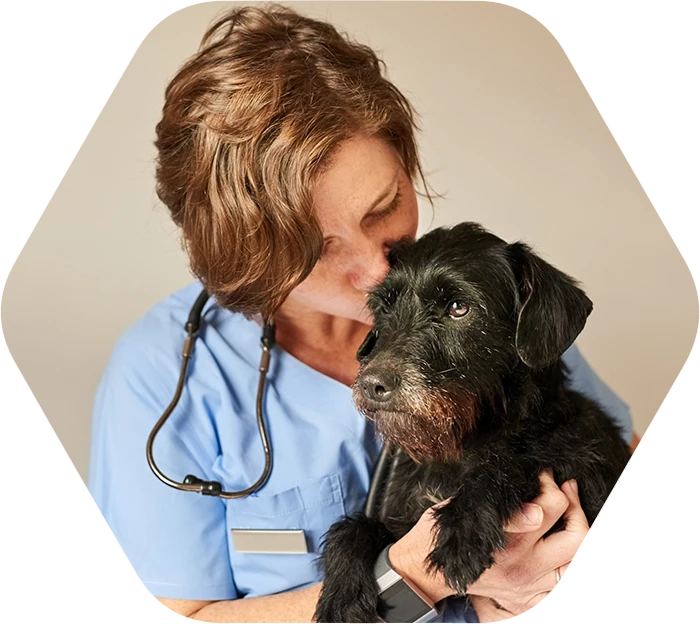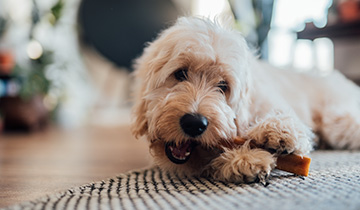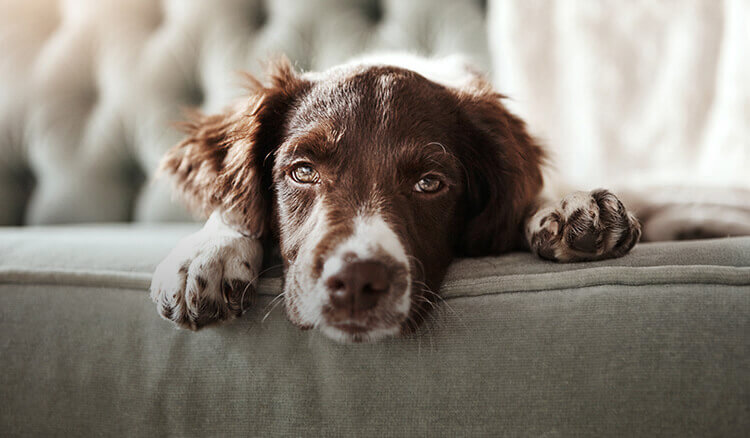Would you notice the subtle signs that show your pet needs dental treatment?
Life is a blast when your pet's teeth and gums are healthy. But if their dental problems go unnoticed, that can (literally) be a real pain!
That's because our pets can suck up the pain and don't always show us when their mouths feel bad. Even so, it's sad to think our pets might be suffering when it can be avoided.
What are animal teeth like?
They may look a little different, but in many ways, cats' and dogs' teeth are quite similar to human teeth.
Our pets’ teeth are made of dentin topped with a hard enamel coating. Each tooth has a soft dental pulp containing nerves and blood and is connected to the jaw by a root which goes deep into the gum.
They're deciduous, too. That means cats and dogs lose their baby teeth, just like we do.
Fortunately, puppies and kittens generally have it much easier than human babies.
"We don't tend to notice when they're teething. It's not like humans, where you can have some very miserable babies during the teething period. With dogs and cats, it tends to go largely unnoticed," says Sally Cory, Head of Veterinary Services, Companion Animal for the New Zealand Veterinary Association.
What can go wrong with pets' teeth?
Cat and dog teeth can decay, although they don't tend to need fillings the way our teeth do. However, just like us, plaque and tartar can be problematic because they lead to gum disease like gingivitis and tooth decay.
On the surface, your pup's teeth might seem fine.
"It's often the changes that are developing below – they're the ones that we don't know about. The crown of the tooth may look fine but things may be not looking so healthy under the gum line," says Sally.
Jess Ashley, the Practice Manager at Millwater Vets, agrees. She says dental problems and gum disease can make life miserable for your pet if they're not treated.
"When that progresses too far, especially for cats, we start seeing Feline Odontoclastic Resorptive Lesions (FORLs), which is a resorptive lesion. The cat gets a hole in the enamel on the gum line and the roots start to rot away. This is extremely painful for cats. The tooth will then fall out and the root gets fully reabsorbed. So, they cope with it, eventually. But it's a painful thing for cats to go through."
Mouth trauma is another problem for both cats and dogs. Fighting, chewing sticks and so on can sometimes cause their teeth to break or fall out altogether.
Vets also watch out for developmental problems, like undershot or overshot jaws, which can cause significant problems over time.
Signs to watch out for
So, how can we spot the early signs of dental trouble and get on top of it before the horror stories start?
Sally says the signs are subtle and may not be obvious to start with.
Bad breath
Odour is possibly the first change people notice. So, smell your pet's breath. Does it suddenly smell slightly off or unpleasant?
People often notice this change in their dogs before cats, mainly because we get closer to our dogs. Cats are more reserved, so we're less likely to accidentally smell their breath.
Check eating habits
Do you find your pet rushes to their food but hesitates before eating?
Eating slowly, favouring one side when eating, and even drooling a little are all signs that your pet may have a sore mouth.
"If your pet has wet and dry food, they may tend to prefer the wet because it's softer and easier to eat.
"And, as disease advances, there could be swelling, like a lump along the side of the cheek. A firm lump could be the sign of an abscess forming," explains Sally.
“Even if they don't show the signs, dental problems can affect our pets' ability to eat and their immune system may become compromised.”
Age is a factor
Jess says older animals are more likely to have issues because of the time that has passed, especially if they haven't had their teeth brushed regularly.
So, if your pet seems to have gone off their food, don't put it down to old age; it could be a sign that their teeth need help.
Prevention is better than cure
The best way to prevent expensive dental problems is to check your pets' teeth regularly as part of their routine health care.
"Many clinics use dental radiography to monitor and screen pet's dental health.
"How often you get them checked can depend on your pet's breed and age, and if they've had any previous problems. But certainly, have their teeth checked at least annually," says Sally.
She recommends being proactive when it comes to treatment, too. For example, if your vet recommends a routine scaling and polishing to remove tartar buildup, try not to put it off.
"Preventative treatment can make all the difference when it comes to your pet's dental health.
You can avoid a lot of problems and distress for your pet and cost down the track if you're carrying out regular dental work."



If you have dental care extra it will appear on your certificate of insurance, if not - you can add this to your PetCare plan during your annual renewal period. For more information call us on 0800 800 836 or see our PetCare policy document.